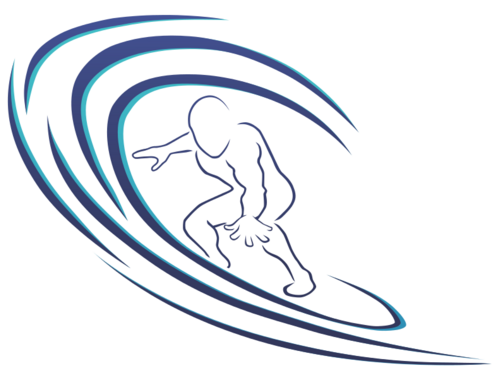McKenzie Method
The McKenzie Method empowers patients to play an active role in their pain relief through education and self-care of their posture and movements.
What you can expect:
- Expert evaluation and instruction.
- Safe, non-invasive alternatives to address acute and chronic musculoskeletal conditions.
- Certified practitioners with over 50 years of combined experience.
Offered By:
An Introduction to the McKenzie Method
The McKenzie Method of Mechanical Diagnosis and Therapy (MDT) known simply as “the McKenzie method” is a method of clinical assessment, diagnosis, and treatment for spinal, back, neck, and extremity pain.
Developed by the famed physiotherapist it is named after, Robin McKenzie, the method centers around the education and active participation of patients in the assessment and treatment of their musculoskeletal pain. Common examples include arthritis, sciatica, muscle spasms, joint pain, and numbness of the extremities (e.g., the hands and feet).
Through extensive curricula and training, clinicians are credentialed in the McKenzie Method to help their patients achieve pain relief while avoiding expensive diagnostic tests (e.g., MRIs, CT Scans, and X-rays) where they are not necessary as well as invasive treatments such as surgery or steroid injections.
The McKenzie Method has a strong emphasis on patient knowledge and injury prevention through self-care.
The McKenzie Method can be broken down into four steps:
- Assessment
- Classification
- Treatment
- Prevention
Assessment
As is standard clinical practice, the first step in the management of pain and discomfort involves a careful and detailed history of the problem. The initial aim is to determine if there is a mechanical explanation for your symptoms. In other words, your doctor investigates whether your symptoms are affected by a change in movement or position.
You will be asked to describe your symptoms – when they started, how they behave, and what worsens or alleviates these symptoms. If there is pain, the severity and radiation (i.e., if the pain moves around) will be determined.
Next comes the physical part of the assessment: as a patient, you will be asked to perform movements that test your flexibility and strength in several positions. Specific actions are performed repeatedly to assess the level of mobility and determine if the method will be of benefit to you.
The use of repeated movements is one of the defining features of the McKenzie method as any change in symptoms and mobility with repeated movements provides insight into the problem and its classification.
Classification
The initial assessment is done to reach an accurate diagnosis with a determination made by your clinical provider if the McKenzie Method will be an effective treatment.
Classifications of musculoskeletal pain:
-
Postural syndrome – caused by continued stress while in a particular posture.
-
Derangement syndrome – caused by mechanical obstruction to a joint.
-
Dysfunction syndrome – caused by impairment in the structure of muscle tissue after trauma or inflammation.
Since every patient is unique, the McKenzie method may not be suitable for all types of problems. If any “red flags” are identified that may suggest a more severe problem that can’t be addressed by an exercise-based approach, he or she will direct you to other specialists for the most appropriate care.
Treatment
Your health professional utilizes the information obtained from the previous steps to then educate you on the cause of your musculoskeletal problem and how it manifests as symptoms.
It is true that following injury, the body goes into repair mode, and this can be leveraged to improve the chances of a quick and complete recovery. The McKenzie method thus promotes the body’s natural repair processes, reducing the need for medication, steroid injections, and surgery. Instead of invasive treatments, your clinician prescribes specific exercises and stretches along with the advice and instruction on recommended postures.
An emphasis is placed on providing the patient with the knowledge and tools to be actively involved in their treatment, and thus reducing their dependency on medical intervention.
The method has been shown to result in a significant decrease in short-term pain and disability in patients with low back pain compared to other standard treatments.
The McKenzie Method is generally a “hands-off” approach. That is, you can perform the stretches and exercises actively on your own. In some instances, however, your clinical provider may need to perform manual assistance and/or administer passive care.
Prevention
The first three steps of the McKenzie Method ultimately lead to the gained insight on how to minimize the risk of the pain recurring. This preventative effect is especially true for musculoskeletal issues of mechanical origin.
If you recognize that your pain reoccurs, you’ll have a well-practiced “arsenal” of techniques to tackle the symptoms effectively while remaining safe. Research shows that self-care improves management of persistent mechanical problems. Ultimately, however, a hybrid approach often works best: Combining self-care with scheduled appointments for reassessment and/or passive care, as needed.
Whether you are experiencing pain in your neck, back, or various joints of your extremities, the McKenzie Method is a great starting point for a non-invasive, evidence-based approach. If you are interested in addressing your musculoskeletal pain with the McKenzie Method, you can set up an appointment with Dr. Michael Sheps, our certified practitioner.
- McKenzie Institute. The McKenzie Method of Mechanical Diagnosis and Therapy (MDT). <https://www.mckenzieinstitute.org/patients/what-is-the-mckenzie-method/> Assessed September 3, 2019.
- Busanich BM, Verscheure SD. Does McKenzie therapy improve outcomes for back pain? J Athl Train. 2006;41(1):117–119.
